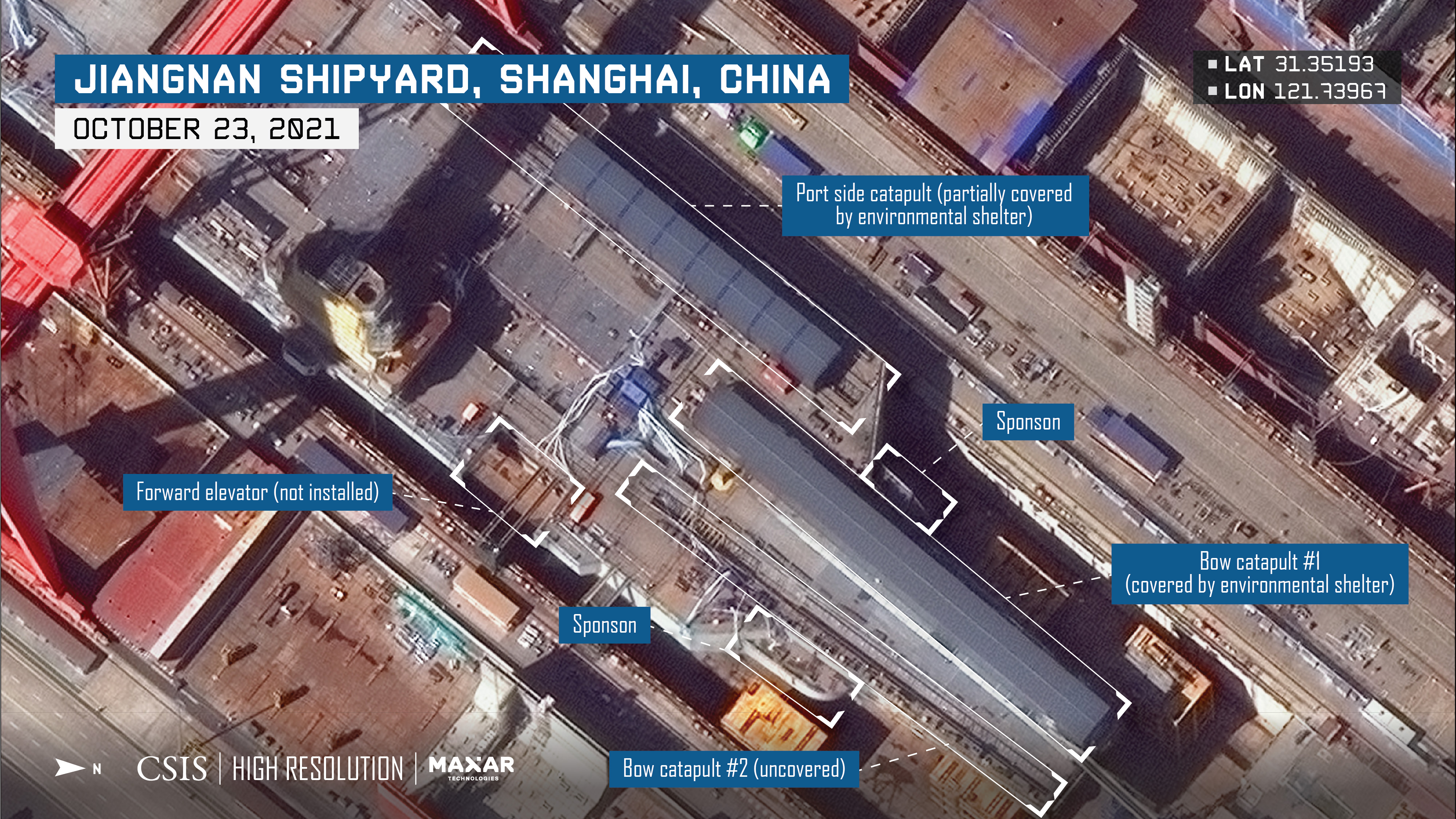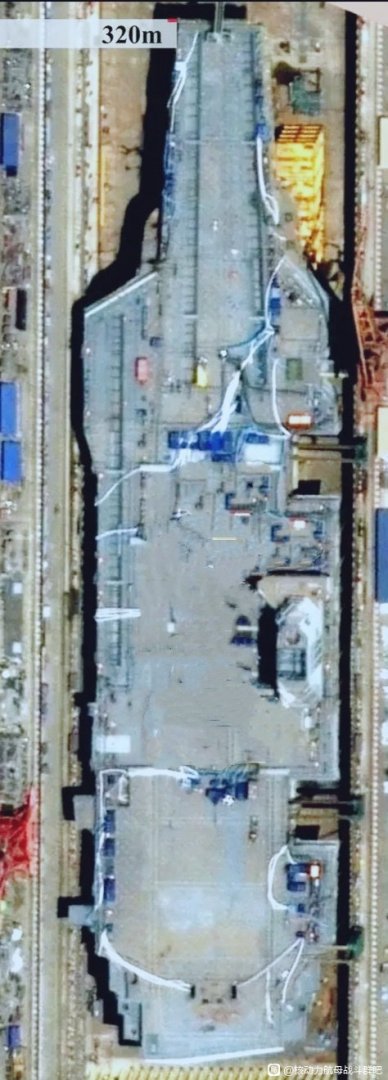China is working towards challenging the US as an aircraft carrier superpower. Beijing has been making steady progress in the development of its third aircraft carrier in under a decade while it has already emerged as the world’s biggest naval power.
China Power — a China-based think-tank — had published a number of satellite images in August 2020, showing the Jiangnan shipyard where the country has been building its third carrier — Type 003 — since 2018. The images show the construction site with a floodable basin and a number of sluice gates.
As the images were not completely clear, it was difficult to identify the vessel’s dimensions. However, the hull of the ship appears to be approximately 40m in width and 48m in length, according to China Power.

If the earlier reports are accurate, the Type 003 is going to be larger in size and also heavier than all of its predecessors with a displacement of up to 85,000-ton, in comparison to the previous 60,000 to 70,000-ton vessels.
While the technical details of this aircraft carrier are not fully revealed, the carrier is believed to feature a conventional propulsion system.
Development At Break-Neck Speed
The most remarkable aspect of China’s Type 003 carrier is the speed at which it is being developed and transferred to the People’s Liberation Army Navy (PLAN).
The carrier is set for being commissioned in 2022. The carrier’s most recent predecessor, Type 002 (Shandong), earlier known as Type 001A, entered service in 2019. Meanwhile, China’s oldest carrier, the Type 001 Liaoning, was declared combat-ready in 2016.
Other reports suggest that China is already planning the development of Type 003’s successor, the nuclear-powered Type 004. According to military commentator Song Zhongping, Type 003 is going to be “the last of its kind”.
/cloudfront-us-east-1.images.arcpublishing.com/mco/WSDKPRRYEFHJZHYOBM3SCZOXWY.jpg)
According to the South China Morning Post, at least four of the six aircraft battle groups planned to be commissioned by 2035 will be nuclear-powered.
“The Type 003 — a conventionally powered carrier with an EMALS-like system — may become the only one of that kind of aircraft carrier, because China will next build multiple nuclear-powered aircraft battle platforms”, he was quoted as saying by the Hong Kong-based newspaper.
According to experts, the prolonged efforts of the PLAN to upscale its military hardware might be in competition for being a superpower in aircraft carrier technology but is still going to lack the experience of real combat, Economic Times reported.
“All of China’s new carriers were expected to be equipped with electromagnetic catapults similar to those used by the United States”, the experts said.
“China’s nuclear-powered aircraft carriers with [EMALS-like systems] are expected to join the navy by 2035, bringing the total number of carriers to at least six – although only four will work at the front line”, Wang Yunfei, a naval expert and retired PLA destroyer naval officer, said. “The country needs to keep developing until it is at the same level as the United States”, Wang added.
However, a few experts wonder why China is moving ahead with the development of Type 003 without waiting to reap the benefits from the logistic and engineering experience after the completion of Type 002. This is a point worth noting as the Type 003 is larger in size due to which its configuration is going to be entirely different from its predecessor.
New Technology Component
One of the reasons for this can be the Catapult Assisted Take-Off But Arrested Recovery (CATOBAR) capability offered by the Type 003, contrary to the Short Take-Off But Arrested Recovery (STOBAR) of its predecessors.
The progress from STOBAR to CATOBAR is a process that has been undertaken by any country’s Navy before China. Therefore, China has to work on the problems it faces during this transition entirely on its own, according to The Diplomat.
Though the PLAN’s approach of simultaneously indulging in several large-scale projects may appear to be reckless, it aligns with the Chinese military development doctrine, as noted by The National Interest.
“China’s tradition is to have one generation in service, a new one in development and a next-generation understudy”, a Beijing-based military expert was quoted as saying.

A similar approach can be seen being adopted by the People’s Liberation Army Air Force (PLAAF). Just shortly after completing the development of the fifth-generation J-20, the country is already underway in developing its stealthy sixth-generation fighter jet and is also conducting research on its next-generation aircraft.
China’s “rush” to give competition to the US can be seen as the country’s redemption after the perceived humiliation of the Third Taiwan Crisis when it was implied that China is neither capable of defending its 11,000-mile coastline nor is it able to project sea power in the East Asia region without making considerable advancements in its fleet of aircraft carriers and thus set the goal of developing six of them by the year 2035.
- Written by Kashish Tandon/EurAsian Times Desk
- Contact the author at: kashishtandon21@gmail.com
- Follow EurAsian Times on Google News




